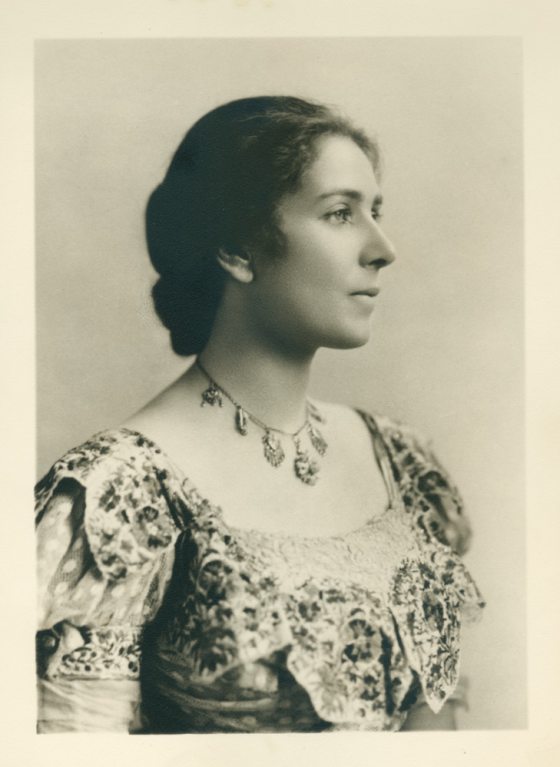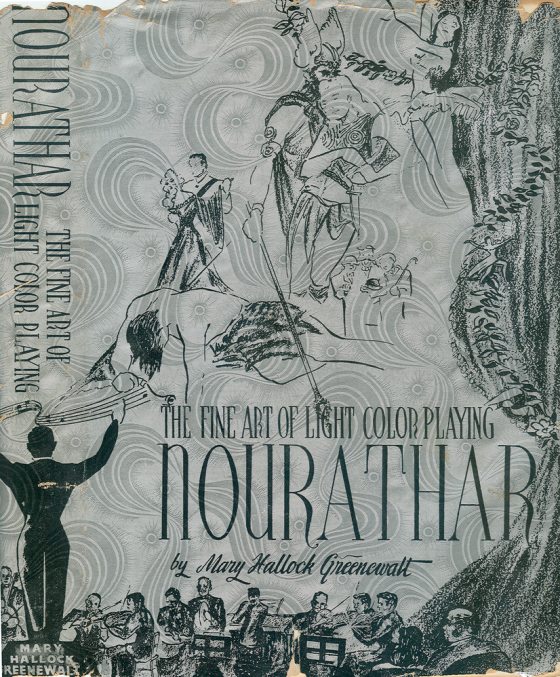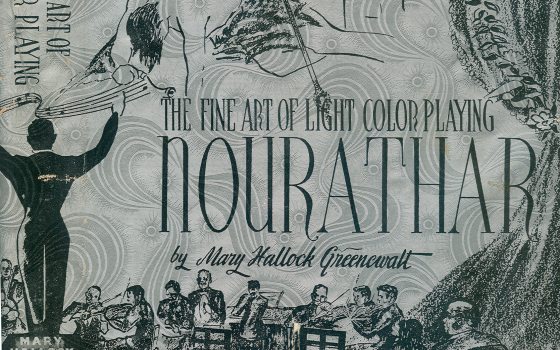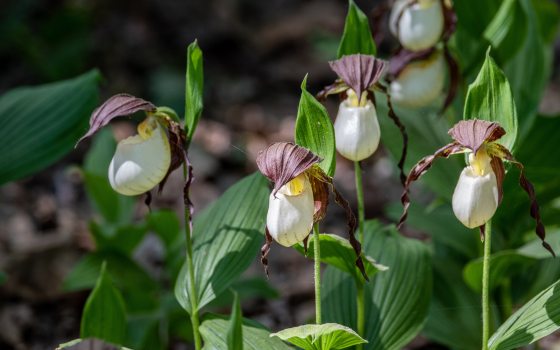Longwood is known for its recently-restored, 10,010 pipe, Aeolian organ (the largest ever constructed in a residential setting). This summer, we’ve received a lot of attention for our premier exhibit, Light: Installations by Bruce Munro. But, did you know that there was a time in Longwood’s history when the spirit of these two crowd-pleasing attractions converged?

Mary Hallock Greenewalt (1871-1950) was a celebrated inventor of color organs, one of which she installed at Longwood in the 1920s. Her sister was Ethel Fleet Hallock (Mrs. William K. du Pont). Courtesy of the Longwood Gardens Archives.
The concept of a “light color organ” was the brainchild of Mary Hallock Greenewalt, a distant relative of our founder, Pierre S. du Pont. Mrs. Greenewalt was an eccentric inventor and musician who was perhaps ahead of her time. Her invention mandated that each change in musical note or chord be accompanied by a distinct colored light—no small electrical feat, as the Longwood electricians who were tasked to build this invention would later find out!
Mr. du Pont paid $5,000 to have the instrument built, and it debuted at Longwood in 1926 in our Conservatory’s Exhibition Hall, with Mrs. Greenewalt playing the piano and Mr. du Pont’s chauffeur, Charles Mason, operating the board per her instructions. The local paper gave the performance enthusiastic reviews, but Mr. du Pont was not quite so impressed. He discouraged further concerts, saying that the space was needed for seasonal floral displays. Mrs. Greenewalt wanted to sell the instrument to the musical world, and at her request Mr. du Pont invited Mr. and Mrs. Leopold Stokowski of the Philadelphia Orchestra for an inspection and exhibition of the organ on May 19, 1926. There is no record of Stokowski’s reaction.

The cover from Mary Hallock Greenewalt’s 412-page book Nourathar, published in 1946. Mary wrote this book on color organs, a copy of which is in Longwood’s rare book collection. Courtesy of the Longwood Gardens Archives.
From that point on, all kinds of problems arose. The Longwood model began to have electrical problems, as a result of dampness. There was increasing friction in agreeing which color combinations should be used for different music, and how the colors should be projected. Mr. du Pont’s steadily waning interest—plus the failure of the equipment to perform satisfactorily—prompted him to pack up the console and all the parts and ship them to Mrs. Greenewalt for use at the Century of Progress Exhibition at Chicago in 1933. The light color organ apparently was ahead of its time. But perhaps some of its spirit is captured in Bruce Munro’s Water Towers, which combine light, landscape and music to amazing effect!


